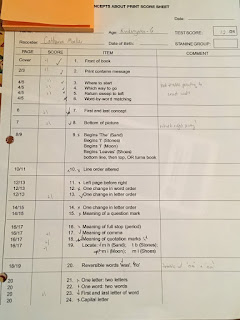Even though Twitter has been around for a little while now, it is a tool I am continuing to learn how to use. I had never used Twitter before, personally or professionally, until last semester. I took the class Educational Technology and Design, and in that class I first was introduced to the benefits of using twitter. Since that class and throughout this Early Literacy class, I have been able to see a value in using twitter. Although I am still in the ongoing process of using Twitter and it isn’t always the most intuitive for me, I do think that i’s a great resource to have. I especially love the ability to follow different authors and keep up with what they are doing. I like to also follow social activists, such as Malala, who can be inspiring individuals for my students some day.
In my opinion, one of the greatest aspects of twitter is the ability to find new resources and tips to look at and then share. It is also a great way to be informed about different things. For example, I learned about National Library Week through Twitter. National Library Week would be a really fun event to celebrate in the classroom. It could get students excited about books and excited about going to the library. Additionally, I was able to learn more about all of the services that libraries are able to offer.
 |
| Tweets about my blog and National Library Week |
Twitter allows me to look at what other people in the field of education are doing. It gives great resources, but it also is helpful in seeing how other people are teaching. For example, as I am posting my blogs about my literacy tutoring each week on Twitter, I am sharing my experience with others. People from all over are able to see what is working for me and what isn’t working for me. This gives people the opportunity to share what is also working for them, or what I could be doing to make my tutoring more effective. Additionally, I am able to see shared experiences with others. One of the key components of writing is to let us know that we are not alone, and posting and sharing blogs does just that!
 |
Twitter is a community of learners and educators. I did not quite expect Twitter to be such a good community when I first started using it. Participating in my first Tweet chat, however, changed my views on who uses Twitter and why. I was able to see Twitter as a resources for professional development and as a way to make strong connections with others. The Tweet chat was a great experience; everyone was so supportive and excited to be able to offer help and advice to preservice teachers. It connected me to people I wouldn’t have otherwise followed. It also connected me to the International Literacy Association (ILA), which I have found to be an extremely useful source. The chats they offer and the tweets they tweet always leaves me with suggestions for my classroom.
Finally, Twitter is a place that can offer inspiration to future educators. From quotes to resources to the supportive community, Twitter has the potential to be used as a tool for success. As I continue my education and UNI, I hope to become better at using Twitter so I am ready to use it in its best way by the time I have my own classroom.
Oh, and feel free to follow me at https://twitter.com/missmoeller18!



















